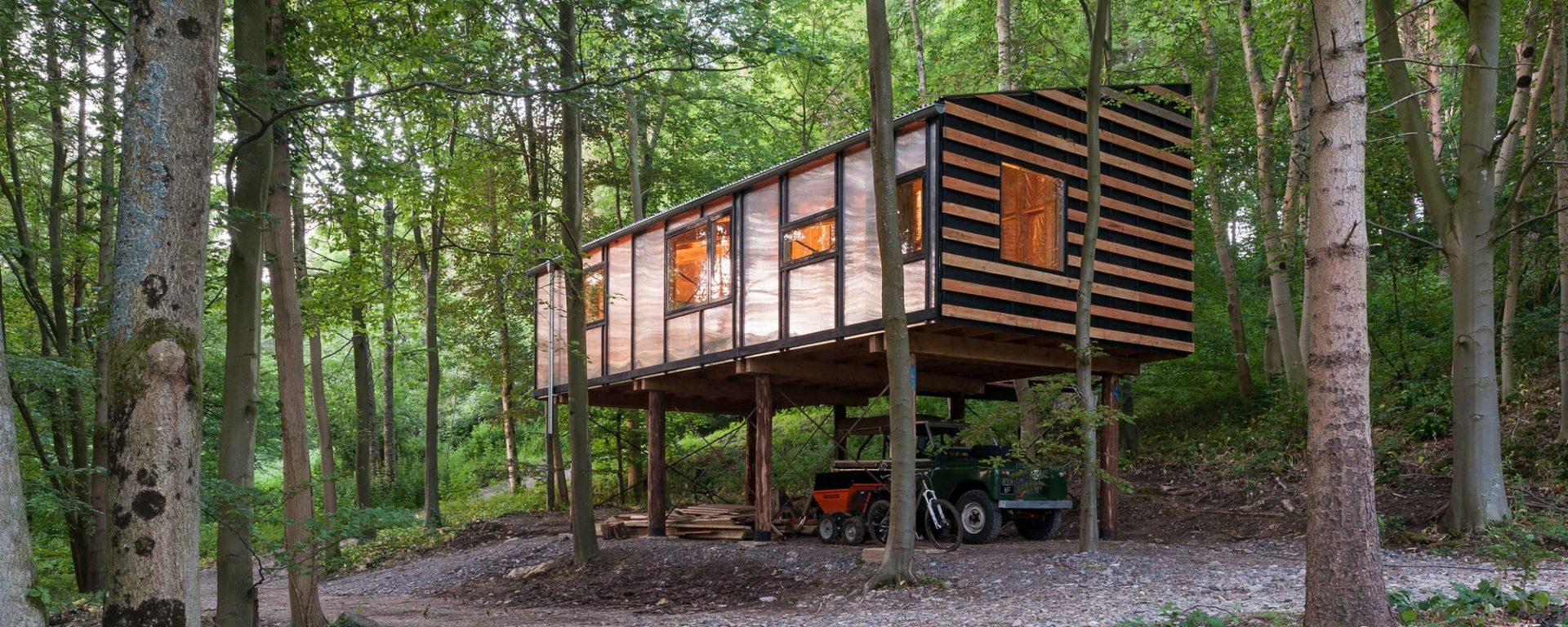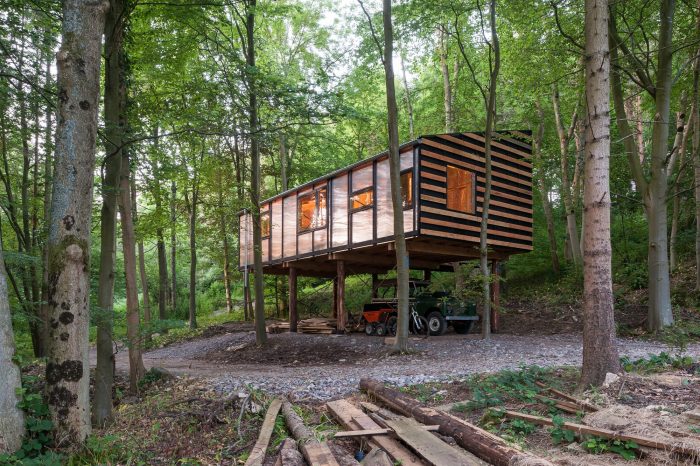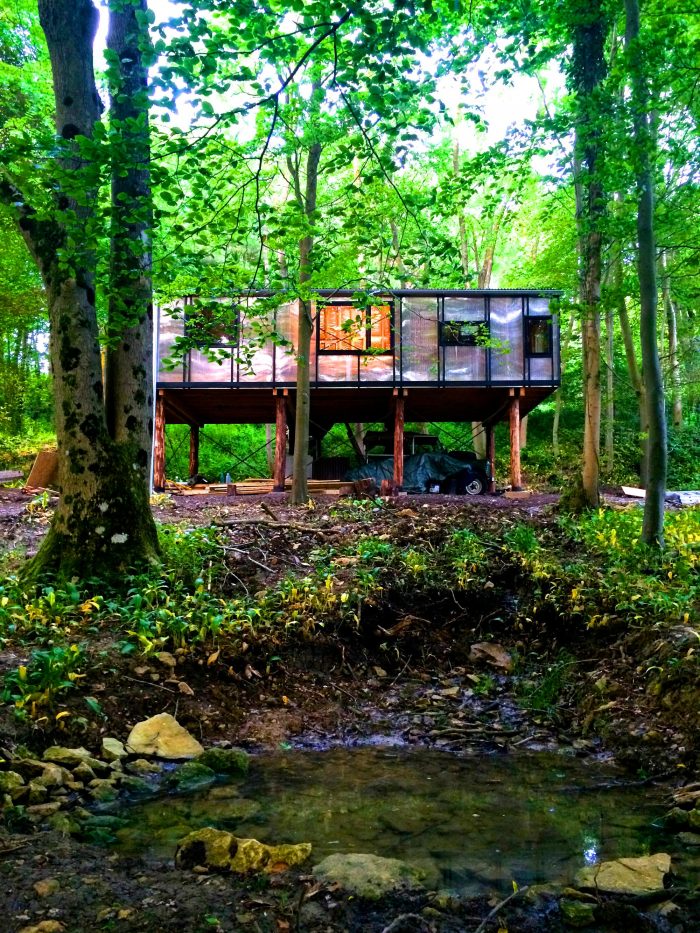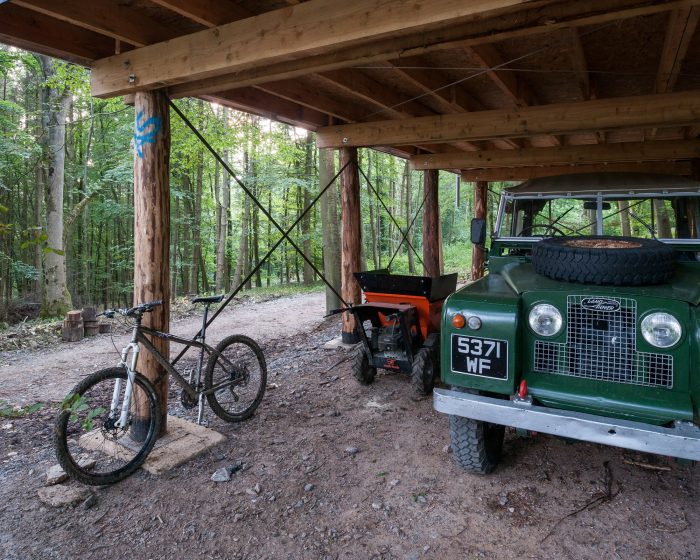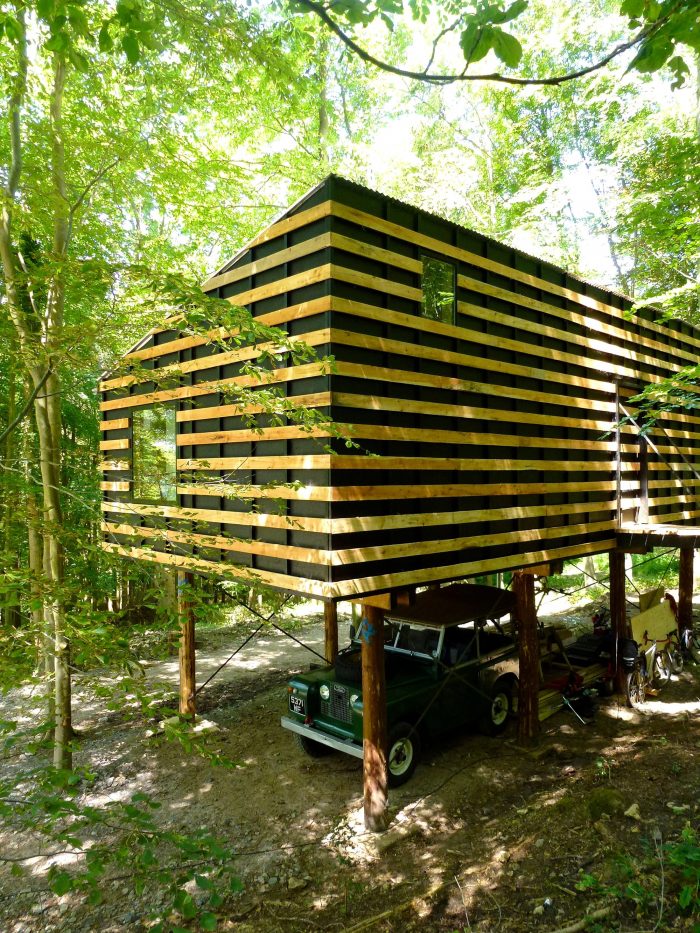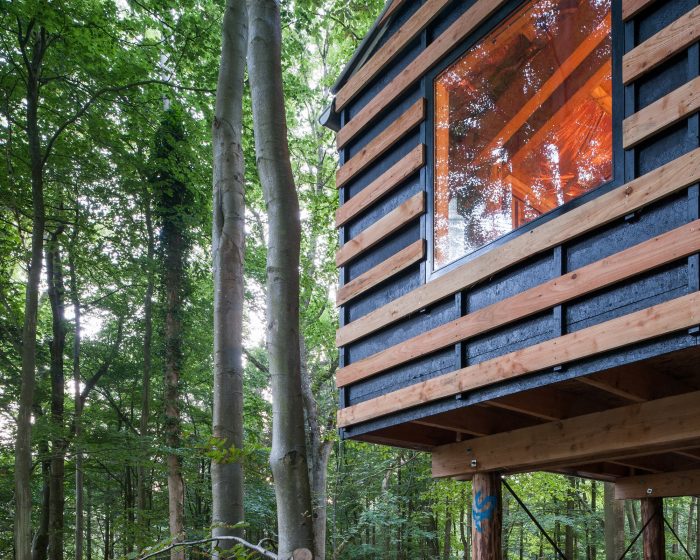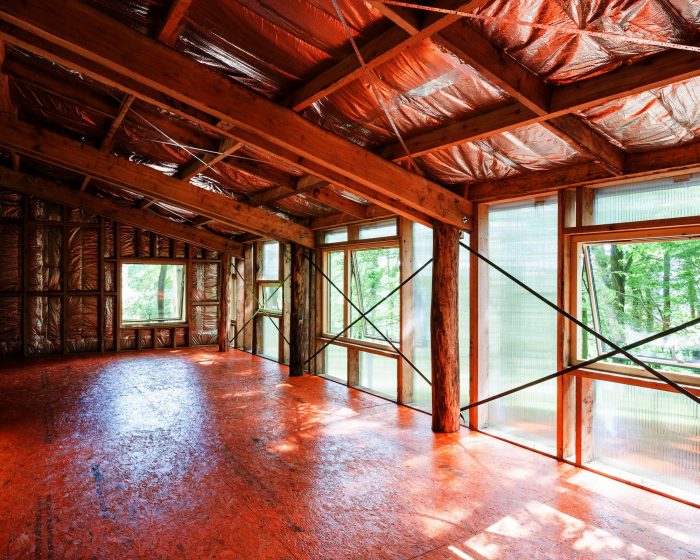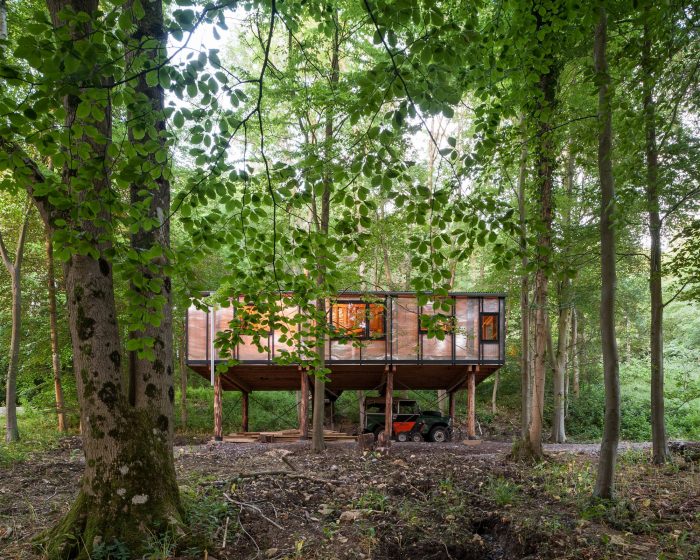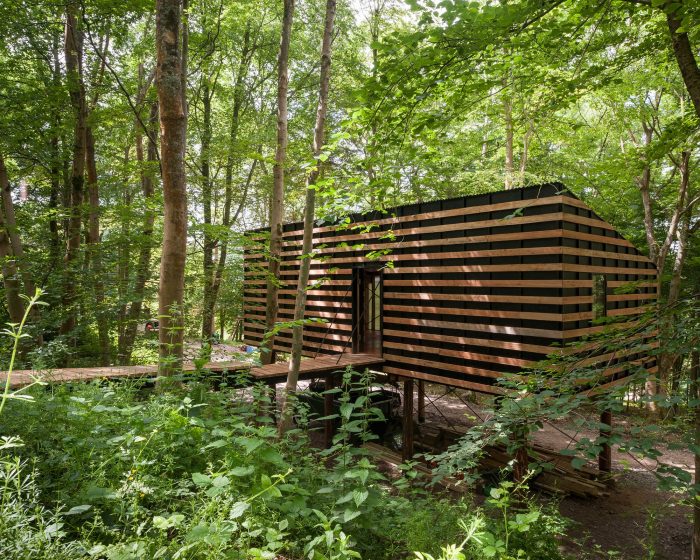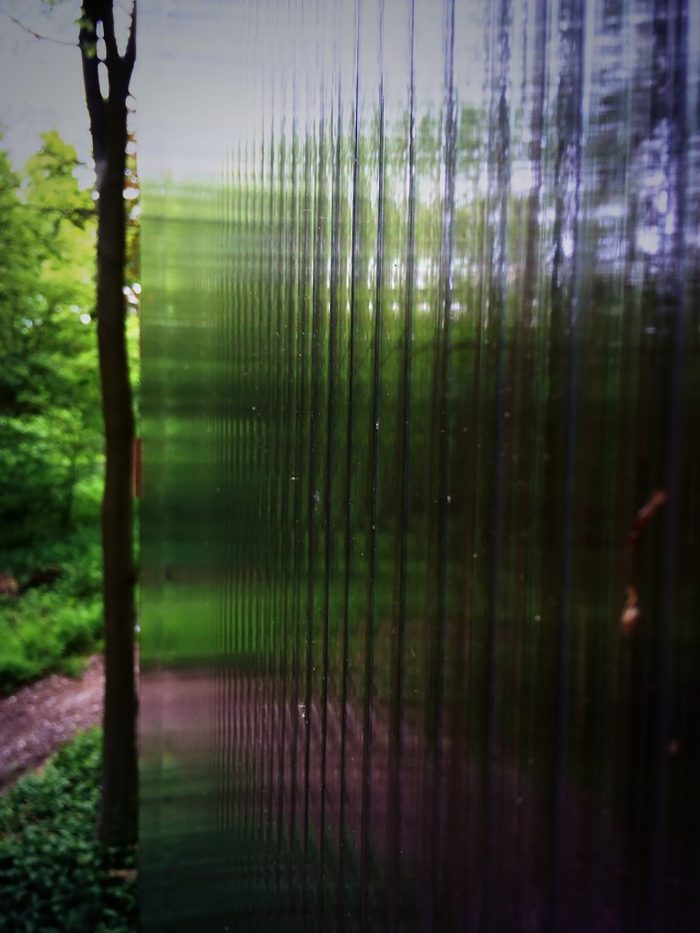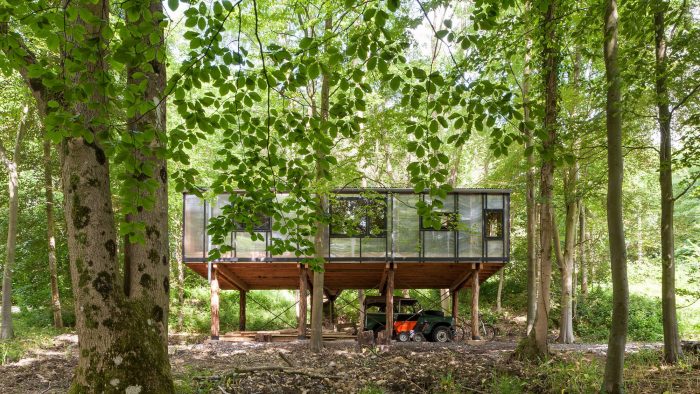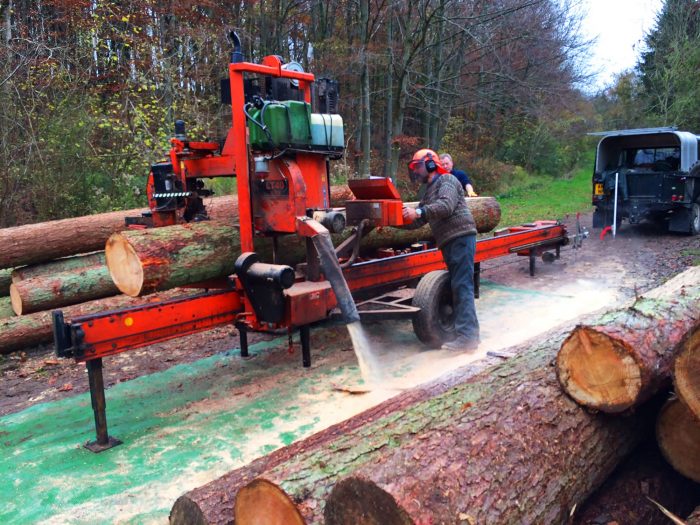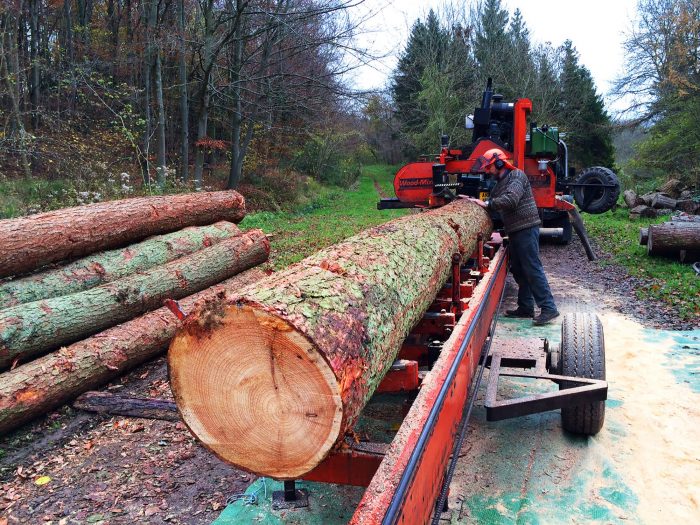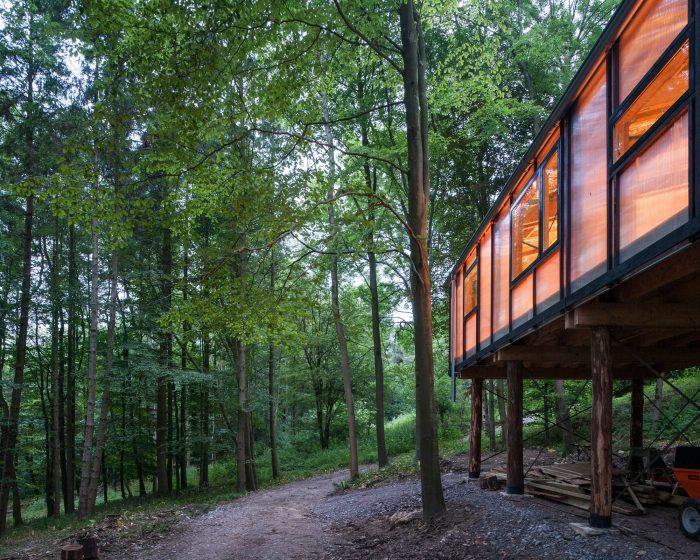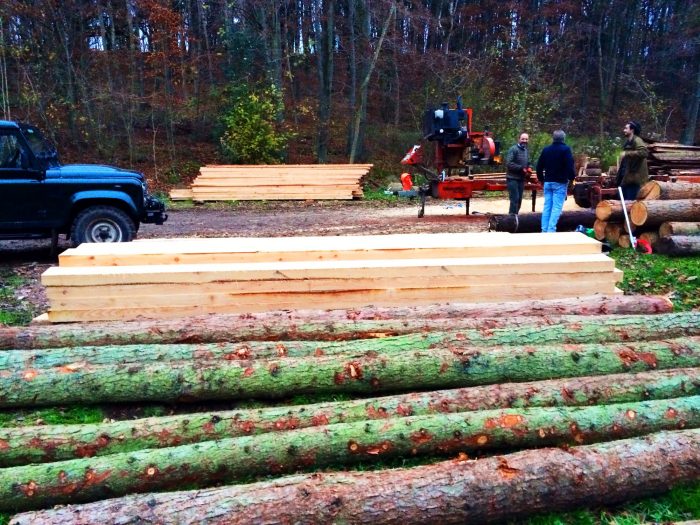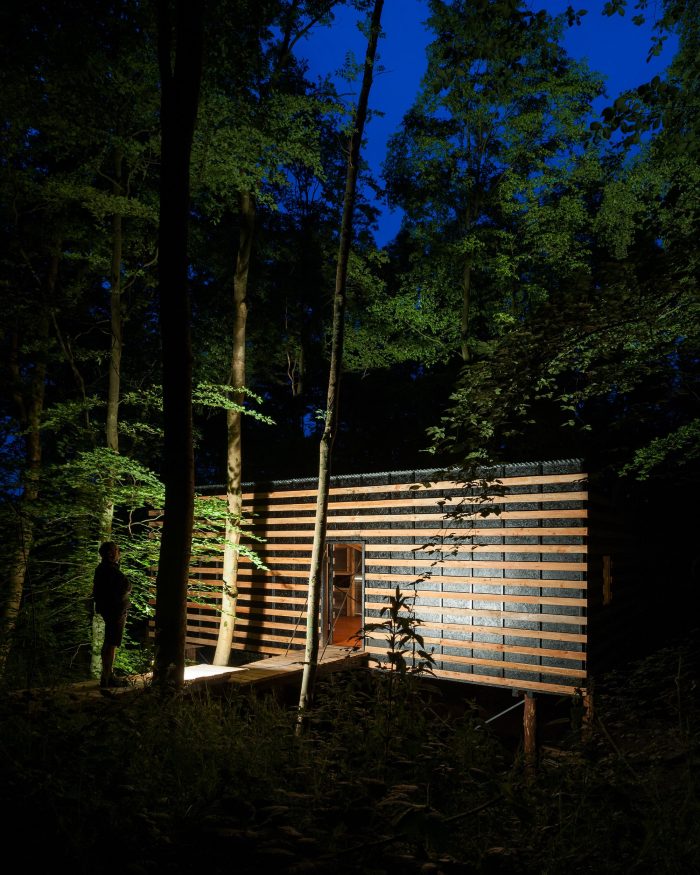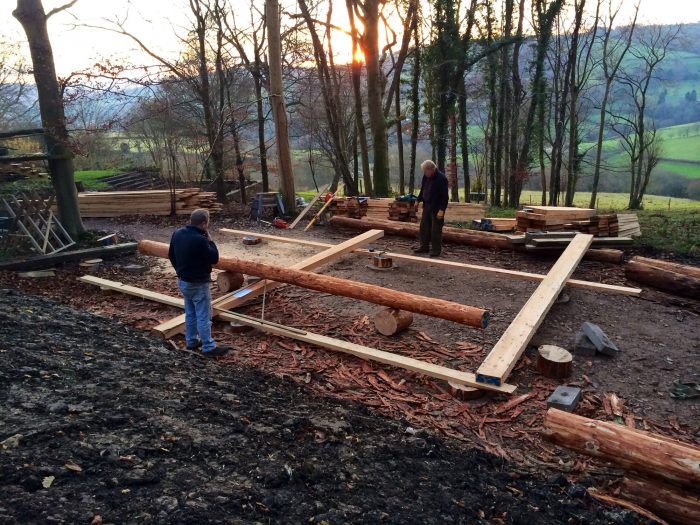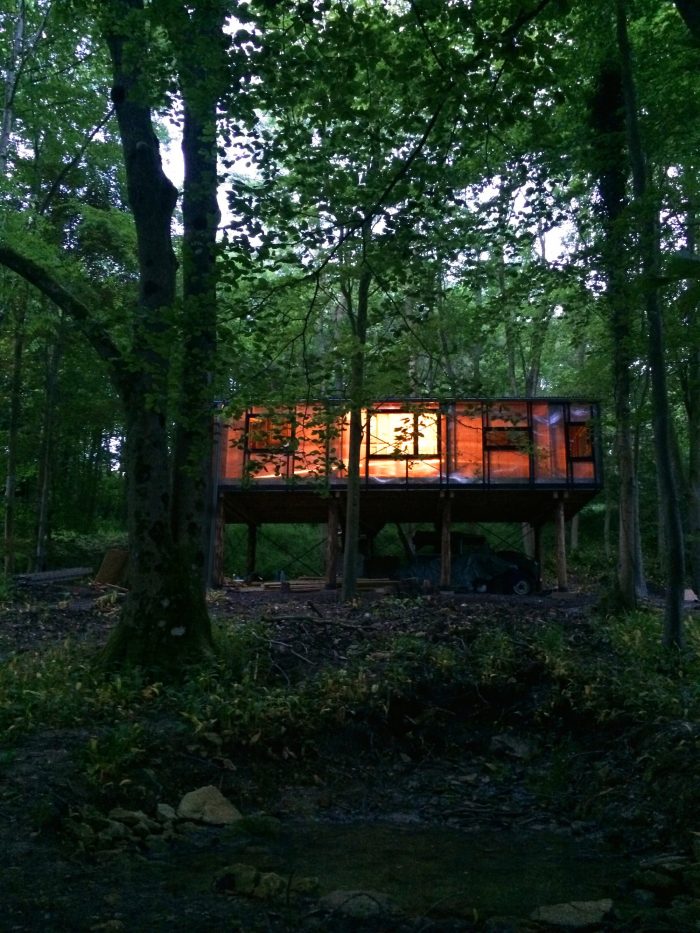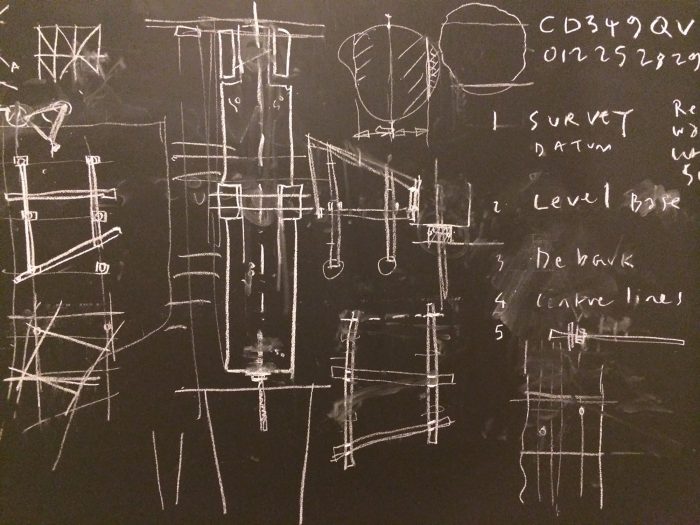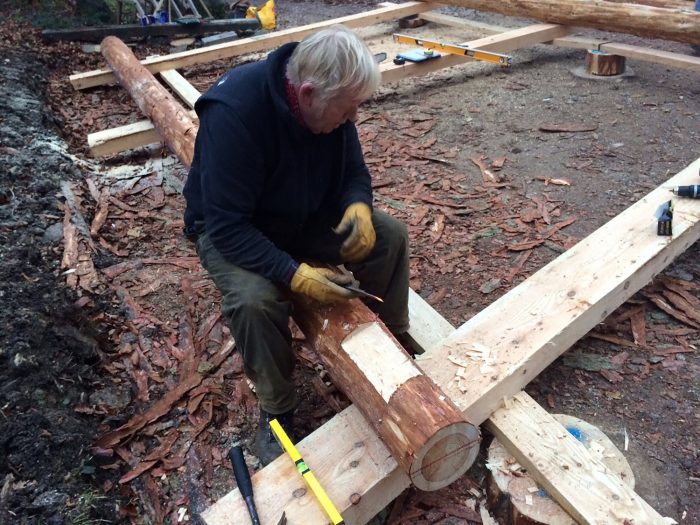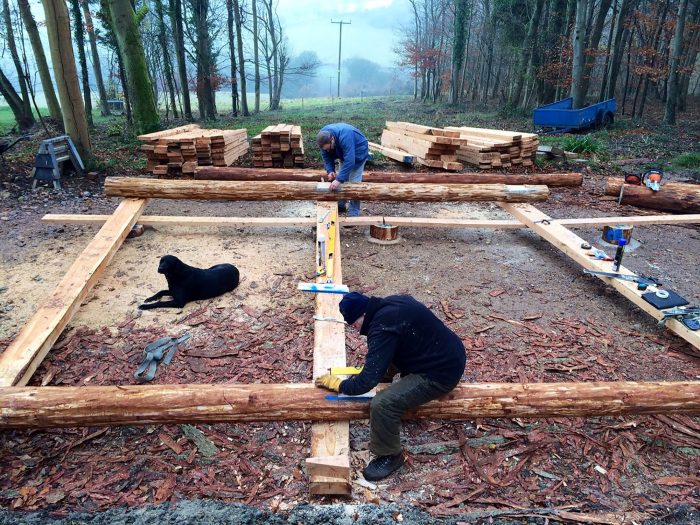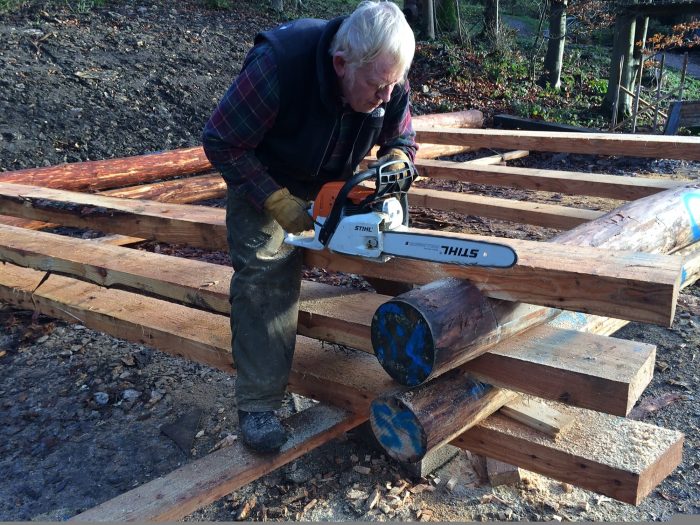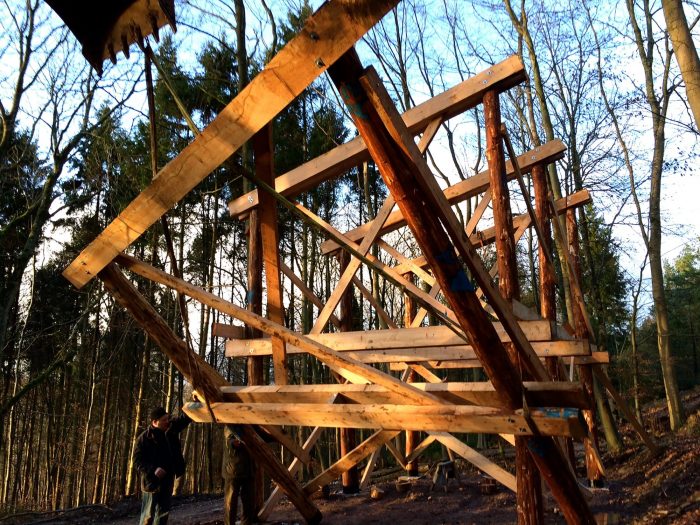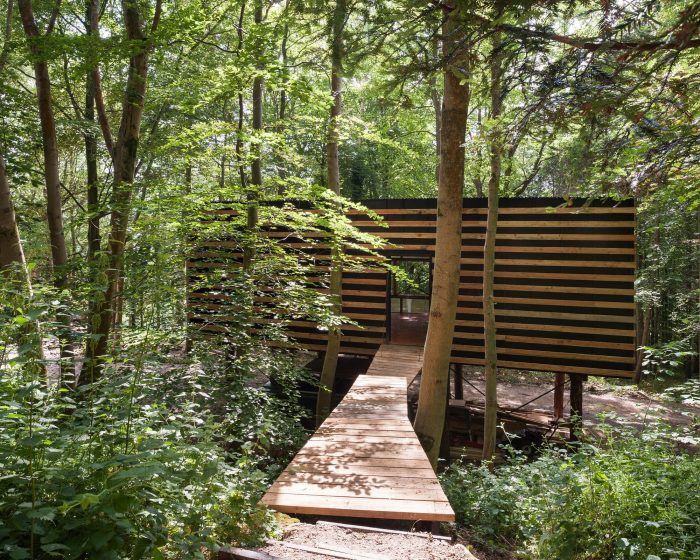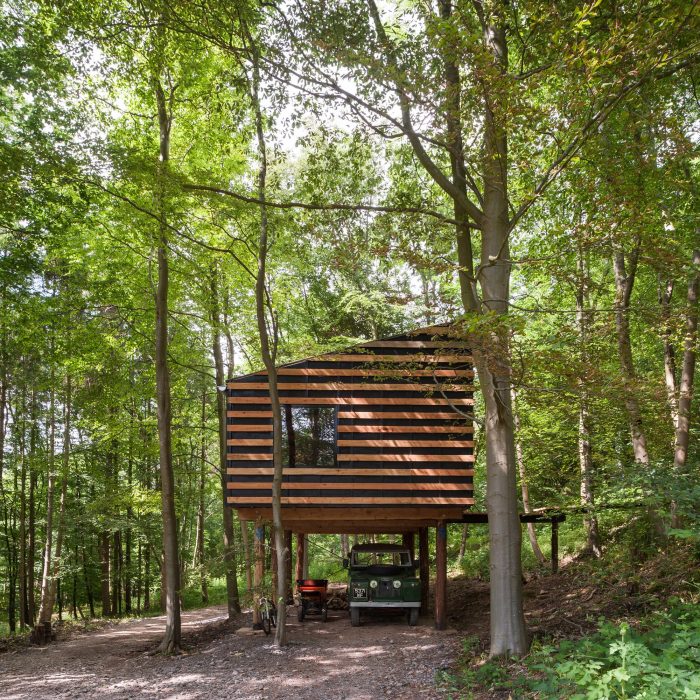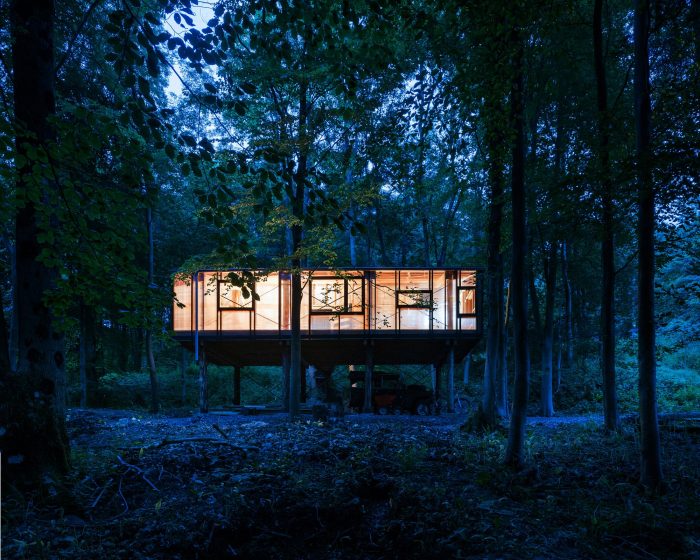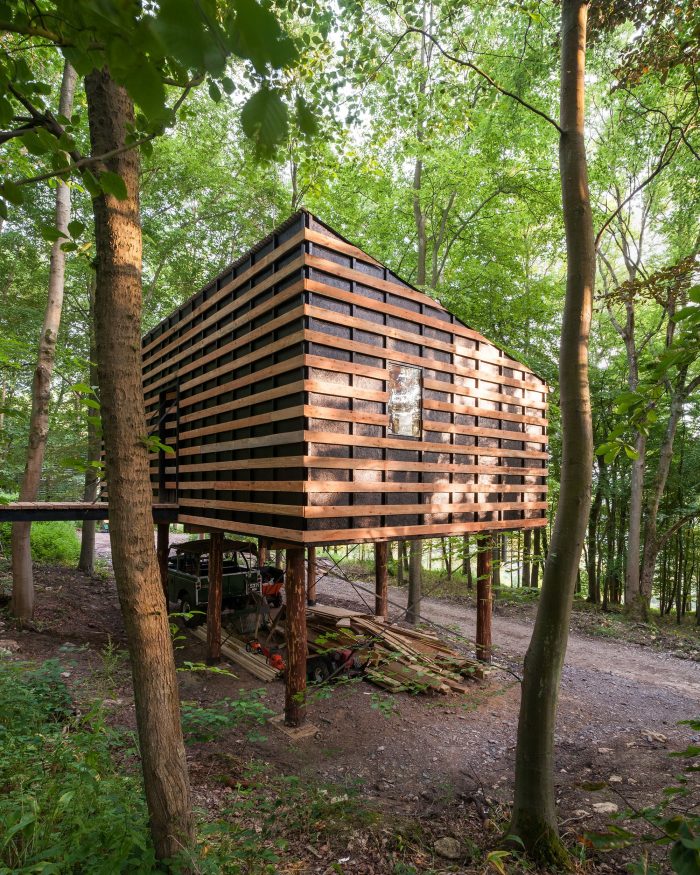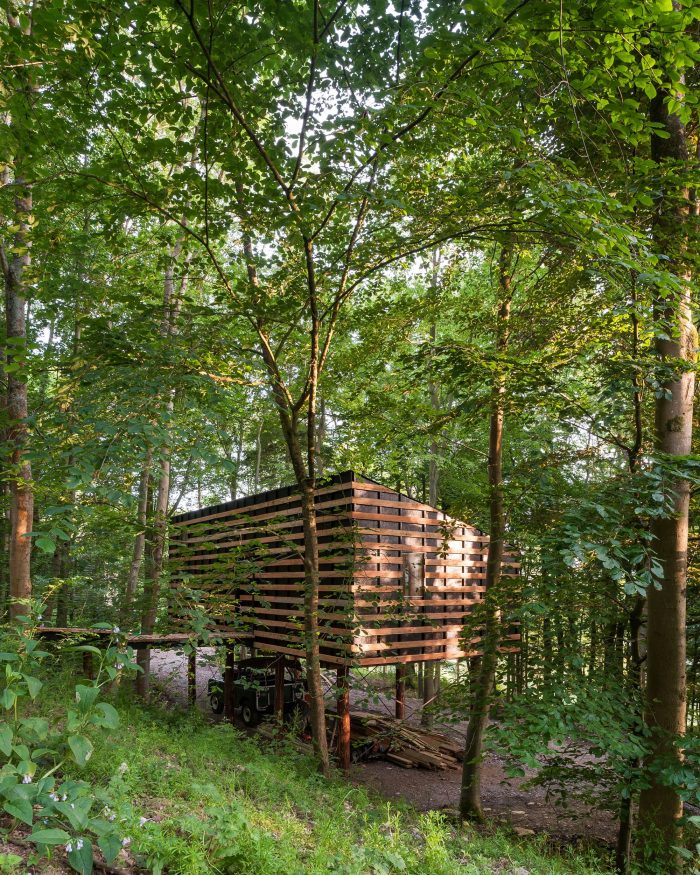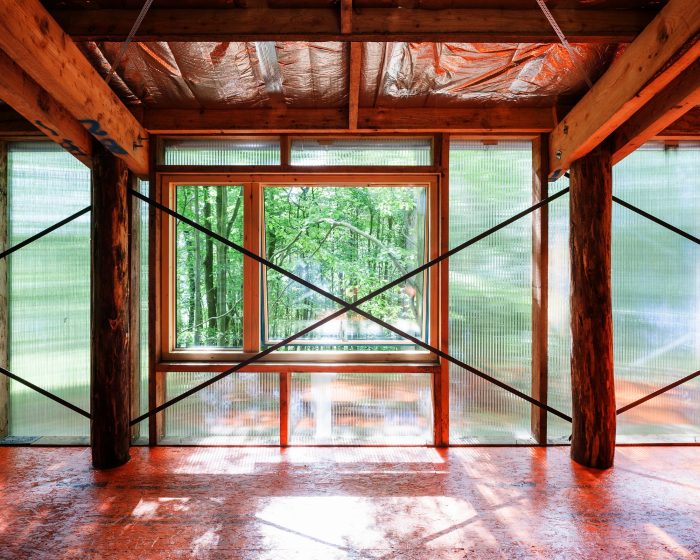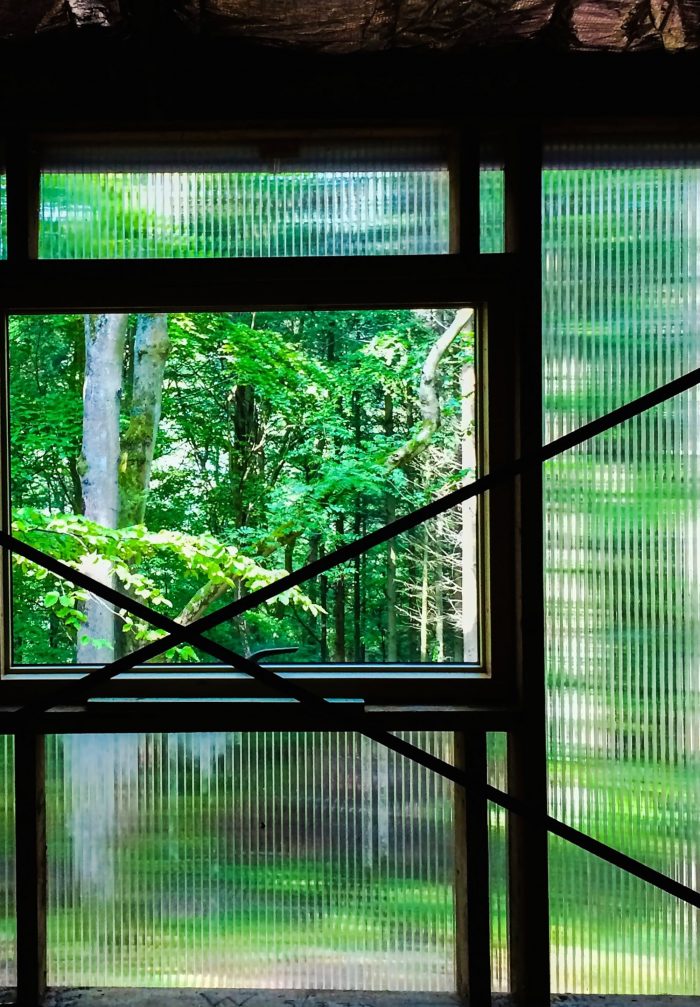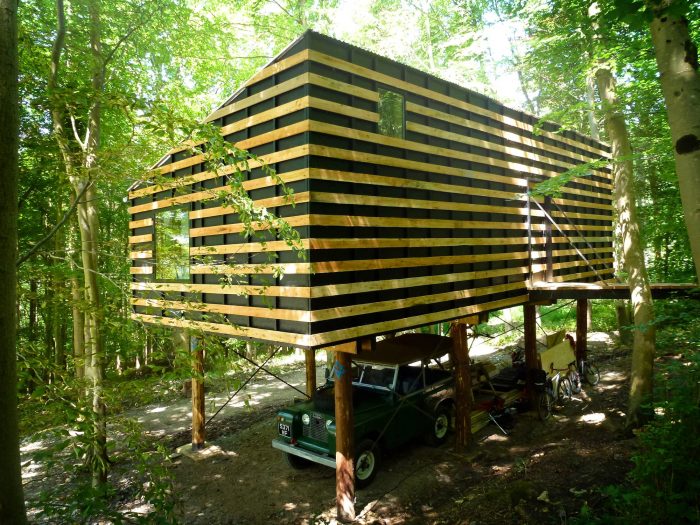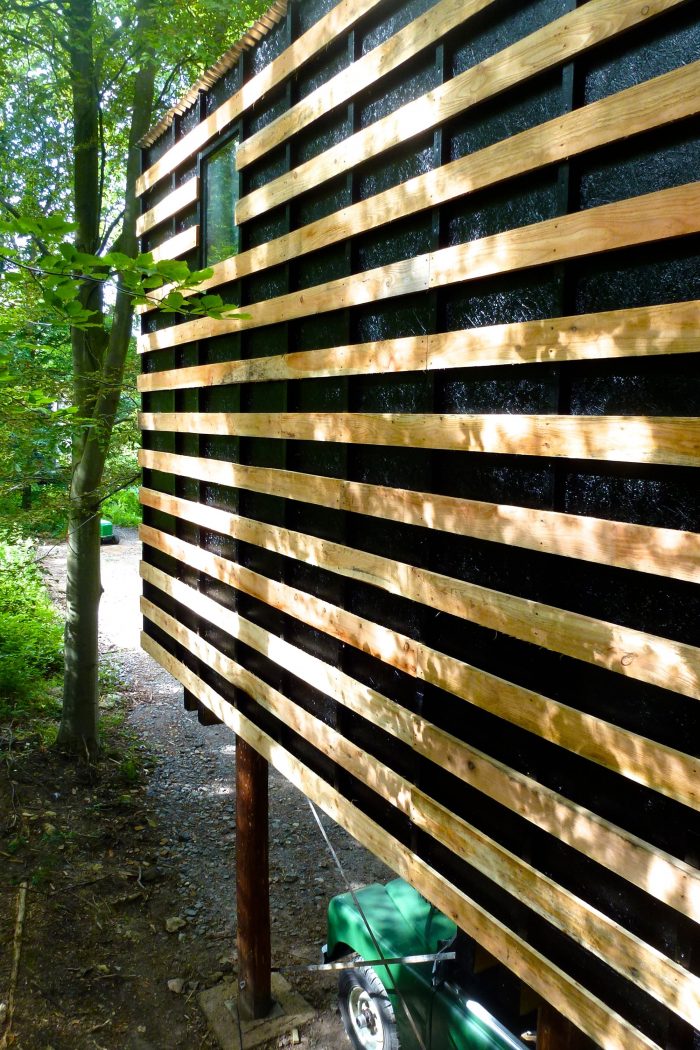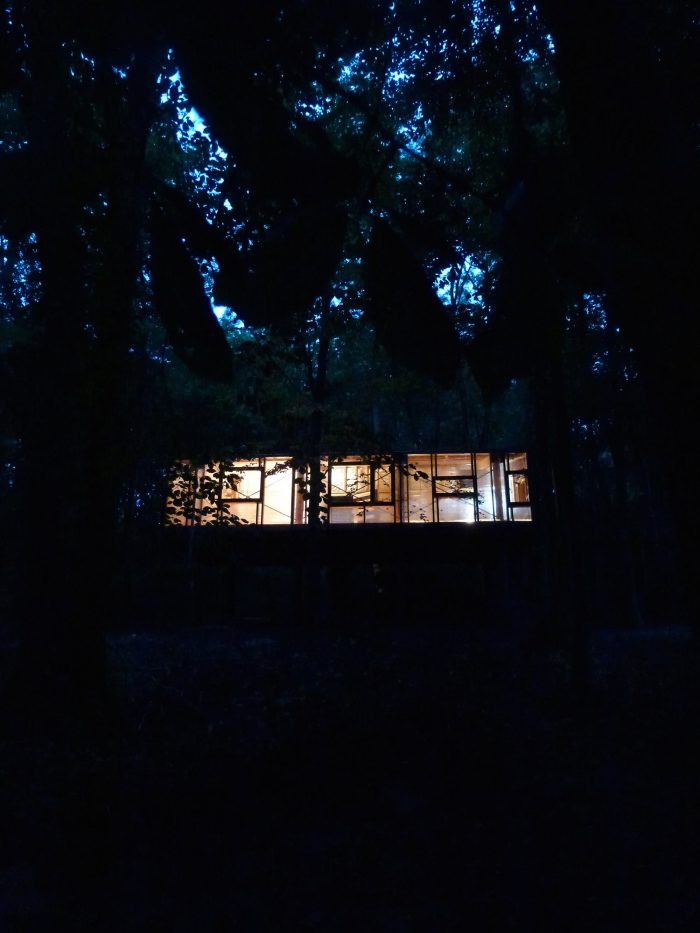这是建筑事务所Invisible Studio在英国巴斯附近的一个新工作室,由该事务所在邻居和朋友的帮助下建造的(他们都得到了同等的报酬),使用的是工作室周围的林地中生长的未经处理和未风干的木材。
A new studio for architecture practice Invisible Studio near Bath, UK, that was built by the practice with the help of neighbours and friends (who were all paid an equal rate) using untreated and unseasoned timber grown in the woodland that surrounds the studio.
工作室分两层–有一个55平方米的封闭空间,通过一座桥从斜坡上进入,上面是一个开放的工作室,供实践者制作全比例模型。
The studio is on 2 floors – there is a 55m2 enclosed space accessed via a bridge from the slope, which is above an open workshop for the practice to make full scale models.
在这个项目中工作的人以前都没有建造过建筑。该项目是一个建立建筑系统的练习,该系统可由非熟练工人建造,图纸最少,允许临时发现和即兴创作,并摆脱预定设计的暴政。非技术团队的 “错误 “在建筑中仍然很明显,而且没有试图掩盖它们。
No one who worked on the project had constructed a building before. The project was an exercise in establishing a system of building that could be constructed by unskilled labour, with minimal drawings, allowing ad hoc discoveries and improvisation to be embraced, and the tyranny of predetermined design to be escaped. The ‘mistakes’ of the unskilled team remain evident in the building, and no attempt was made to conceal them.
所有的木材都是在预定了移动锯的2天时间里铣出来的,部件的套件是工作室所在地的树木。没有使用其他木材。这为建筑设计提供了依据,并接受了最小成本和最小设计的限制–例如,在这一时期结束时铣出的覆层只够覆盖工作室的一部分。
All of the timber was milled over the 2 days that a mobile saw was booked, and the kit of parts was the trees that stood on the site of the studio. No other timber was used. This informed the building design, and the constraint of minimal cost and minimal design was embraced – for example, the cladding that was milled at the end of this period was just enough to partially clad the studio.
地基是手工混合的,并被设计为尽可能的最小。该项目由最终用于建造桥梁和地板的木材自行搭建脚手架,避免了租用昂贵的脚手架的需要。
The footings were mixed by hand, and designed to be the most minimal possible. The project was self-scaffolded by timber that was ultimately used for the bridge, and the floor, negating the need for expensive scaffold hire.
窗户是从簸箕里捡来的,而地板漆是该公司另一个项目留下的。所有使用的木板都是最便宜的等级,绝缘材料是用切下来的绝缘材料精心拼凑而成的。该项目用林地里的废旧木材取暖,屋顶的水流入一个形成自然栖息地的衰减池。
The windows were scavenged from a skip, and the floor paint was left over from another project of the practice’s. All of the boarding used is the cheapest possible grade, and the insulation is carefully pieced together from off-cuts of insulation. The project is heated by waste wood from the woodland, and water from the roof feeds into an attenuation pond that forms a natural habitat.
Architects: Invisible Studio
Area : 55 m²
Year : 2014
Photographs :Andy Matthews, Piers Taylor
Project Team : Piers Taylor, Alan Matthews, Bernard Twist, Simon Schofield, Alfie Dring, Cuffer Matthews, Luke Desborough
Budget : £15,000
City : Bath
Country : United Kingdom

